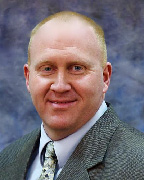Owners remain concerned about the excessive build up of snow on roofs and structures throughout New England. The concerns are well-founded. If left in place, snow can build up to levels exceeding the structural capacity of the original design of the building.
Unfortunately, homeowners as well as private and public facility managers have been forced to shovel snow on acres of roofing as well as their driveways and parking lots. Removing snow from the roofs poses additional problems unseen on the ground. First, working on a roof, especially near the edge, can be quite dangerous for workers. Second, the shoveling activity has the potential to damage the roof membrane causing potential leakage, and it is frankly very cumbersome, to move that much snow from the middle of a vast roof expanse to the edge. Ideally, plastic shovels would be used. However, snow blowers can be utilized for larger areas if adjusted properly. The snow blower must be kept off the roof surface so that the rotating action of the blades does not tear the roof surface. Care must be taken not to make matters worse by piling the snow on the roof which adds concentrated loads to areas not likely strong enough to support them.
With large roof areas adjacent to walls or parapets, snow drifts can build up. This presents additional snow weight which, again, may not be supported by the roof structure. The Code calls for roof design of 30 pounds per square foot for "normal" snow at approximately 20 pounds per cubic foot, this translates into a depth of 18 inches of snow being comfortably supported by normal commercial roofs. If, however, the snow becomes heavier after absorbing rain or turning into ice the depth would be reduced and it becomes even more imperative to remove the snow and ice to avoid accumulation.
Owners must be careful to consider and review areas of the building that have been renovated. If a structural element below the roof has been removed for any reason such as building expansion or accommodating HVAC equipment, the area should have been reinforced at the time of removal. If not, be sure to remove the additional weight from the snow so as not to overtax the structure. Oftentimes, a two-story building is built immediately adjacent to a one-story building. This would cause a snow drift condition between the two and if the lower, one-story building, is not reinforced to accommodate the snowdrifts the structure would then be susceptible to collapse.
Modern roof design includes additional insulation which does not afford the roof the additional melting that used to occur when insulation was thin. This promotes additional snow build up thereby increasing snow loads.
Many people are under the impression that ice dams can only occur on residential buildings at the edge of a sloped roof. Ice dams can occur anywhere there is snow build up against a building structure. When drifts occur within tight roof areas, up against a wall for example, the heat escaping from the wall can cause the snow to melt and freeze at night. Water then pools behind the ice, against the warm wall, and can flow up and under flashing or leak through any vulnerable area of the wall assembly. Leaks from ice dams can cause ceilings to collapse, furniture to be ruined, and mold to form within the wall structure.
It is important to remember that the evaluation of your roof structure should be performed by a registered professional engineer who is qualified and certified by the State to safeguard public safety. Structural engineers are trained to review the existing conditions in order to give homeowners and property managers a peace of mind regarding roof structures. While contractors and roofers can remove the snow, they are not qualified to determine whether or not your roof structure can support the loads imposed in this severe winter.
Michael Teller, A.I.A., NCARB, LEED AP is an architect and president and Wayne Lawson, P.E., SECB, is vice president of CBI Consulting Inc., South Boston.
Tags:
Owners should be pro-active and remove snow build-up on building roofs now
February 17, 2011 - Construction Design & Engineering
 (1).jpg)









.png)